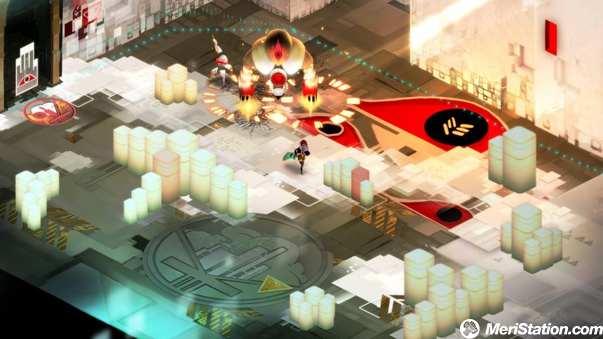Supergiant won the hearts of many of the players of the last generation of consoles thanks to Bastion, an Action RPG that marveled, among other things, for its narrative.
It was a story in videogame format. One those titles that consolidated the idea that in the indie territory you could create adventures that have little or nothing to envy to the big productions.
For The Kid, for its narrator, for the epic of that adventure. For all this, Transistor was so expected. Supergiant announced it a long time ago, too we thought some, but this week is already here on both PC and Playstation 4.
The developers of this study created in 2009 have experience of various years within the EA structure, where they worked in the Command and Conquer franchise . When they decided to go free, his first project took two years to see the light. A game that put us in the middle of a fantastic and colorful world starring The Kid , an anonymous young man who followed the steps narrated by a voice-over that gave a magical touch to the game. Everything from an isometric view and a progress system by various levels.
Both things, the isometric view and the progress by phases and levels, are maintained in Transistor. Also the good taste for the visual section and a wonderful soundtrack. But there are also surprises and substantial changes in the city of Cloudbank.
A death that did not touch
The first bars of play are confusing as almost everything that happens in Transistor. Red is the protagonist of this adventure, a girl with red hair who is in the middle of the street. Beside him, a body perishes with a huge sword stuck in it. And the sword speaks. He asks us to take it from where it is and we see how it calms down knowing that Red is alive.
For a moment I thought maybe I had killed the life of this mysterious woman. We do not understand anything in the middle of this futuristic world, and Transistor – that’s the name of the broadsword – invites us to escape from the city. His role is key in the game, as he replaces the role of the narrator of Bastion, but has an implication -both emotional and in action- within the game clearly different.
This is how Transistor starts. As we move forward we realize that something is wrong in Cloudbank, our city. People have disappeared from the streets and in their place there are waves of enemies that want to kill us. What is happening in the city is called the Process, and the only thing that we have clear is that these robots and varied enemies are programmed to kill us.
As the game progresses, we discover details that tell us how things have changed. Terminals where we hear news that tells the events of Cloudbank to the disaster, devastated areas, other closed, censorship in the terminals that do not allow us to alert of what actually happens and some bodies of dead people from which emanates a kind of energy that is merge with the sword. She is, in fact, the only one who can speak since we,
The advance through Cloudbank is semi- linear . We are going over closed levels as if we were inside a large dungeon – which in fact is like that – with detours to places where there are elements to explore, areas that we can get lost if we ignore them and move
along the main road and little else. Although it is rich in details that we can observe, investigate and comment with Transistor, the basis of the game is to cleanse each space of enemies to move forward, level up and get new skills … while we understand what has happened in the city and who are behind of all the problems that lie ahead.
Action shifts
One of the biggest bets of the game and something that makes it incredibly special in every way, not only in the audiovisual, it is their system of play . Transistor allows us to assign four actions to the four main buttons and we can fight as if we were in an Action RPG to use.
But the great asset of the game is in the active turns it offers. Pressing a trigger, we stop the time and draw the plan we want to carry out: move to the side, hit with an attack, move to another, launch a projectileIt hits several enemies at the same time, and we execute.
We have a bar at the top of the screen that is consumed according to our movements. Walking on the stage reduces the bar, some actions take 25% , others less, etc. Once we have marked our attack, we give the ok and see how the sequence is executed.

